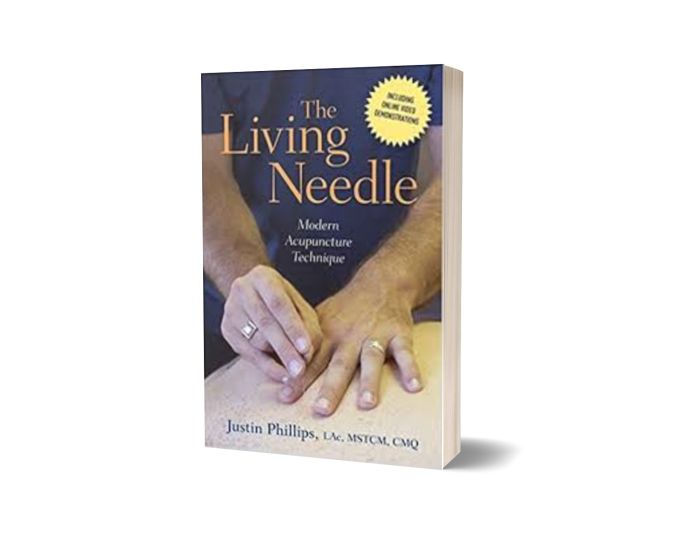We use cookies to make your experience better. To comply with the new e-Privacy directive, we need to ask for your consent to set the cookies. Learn more.
The Living Needle - Modern Acupuncture Technique
A thorough explanation of needling techniques for acupuncturists, from the basics of how needles work to the teaching of essential methods, through to the energetics and tips to improve technique. Includes online video demonstrations of practice, with further tips and advice.
Undergraduate acupuncture education can leave gaps in practitioners' understanding, into which vague and enigmatic Orientalist notions frequently creep. This is particularly the case when it comes to needling. Many practitioners emerge from their undergraduate acupuncture education somewhat perplexed about needling, having been witness to fuzzy thinking on the subject cloaked in mysterious exhortations to 'use your intention' or 'channel universal energy through the needle'. For those who are looking for a sensible way to think about acupuncture needling, this book might be helpful.
The Living Needle is divided into seven chapters. The first two chapters deal with basic yet important information about needles, safety, patient positioning and practitioner posture. Chapter three discusses insertion and depth, followed by a robust explorations of deqi in chapter four and propagation of needle sensation in chapter five. Chapters six and seven grapple with 'Compound and Complex Techniques' and 'Duration of Treatment, Retention of Needles and the Treatment Experience' respectively. The text is supported by plenty of black and white illustrations and, for those who make the cogent point that it is difficult to teach needling from a book, the publishers have included extensive video demonstrations of the techniques on their website. Although not a replacement for experiencing a needle technique on oneself, this will at least partly fill the gaps left by print.
Diehard traditionalists may balk at the 'modern' approach of this author as indicated in the title, which often sees the author present his understanding of needling in modern physiological terms. Thus he discusses the 'functional engagement of body tissues' and the 'concrete anatomical reality' of needling; take for example his presentation of tonification and sedation:
'When we push the needle inward with emphasis (thrust) we are pushing tissues together, compressing and compacting them. This compression will collect and gather blood, lymph, and qi, and thereby increase activity at the point and into the channel. Conversely, when we pull the needle outward (lift), it will pull tissues apart, increasing interstitial space, expanding blood flow, and allowing more movement through the tissue to eliminate points where things have collected, such as stagnations.'
In this vein I particularly appreciated the clarity of his presentation of the tonifying/ dispersing effects of needling in terms of the parasympathetic or sympathetic nervous systems. Whilst such a modern approach could be risky given the incommensurate paradigms of East Asian medicine and biomedicine, the author demonstrates sensitivity towards these aspects and treats the traditional material with respect. That said, he is not averse to a traditional perspective where it helps to explain clinical practice ('Any hole created in the body, and also in the wei field of the body, can allow for the release of some qi. This is why in cases of deficient patients, the number of needles will be reduced.'). Neither does he avoid grappling with the difficult questions. He has clearly thought hard about all the received traditional dogma and come to his own conclusions. For example, on the subject of the apparently contradictory traditional models of the direction of channel qi flow according to the 'Chinese clock' or the shu-transporting points, he is happy to concede that 'There is no single answer to this question.'
In terms of gripes, I was disappointed that there were no suggestions for further reading, or indeed any references at all. Whilst this makes for a slimmer, less cumbersome reading experience, it leaves the text sitting in something of an informational vacuum and the reader is left without any indication of the provenance of this material. Presumably like many of us, the author has studied widely with diverse teachers to come to his own understanding of the subject. It would have been helpful to have some idea of the background of his material. That said, this is an eminently sensible little book. The author's curiosity, clinical experience and skill shines through these pages, and for those who need a basic guide to needle technique that presents an intelligent way to think about needling, the qi paradigm and physiology, I would have no hesitation in recommending this book.
Danny Maxwell
| Author | Justin Phillips |
|---|---|
| Publication Date | 31 Dec 2017 |
| Publisher | Singing Dragon |
| Number of Pages | 96 |
| Book Format | Hardback |
* Orders shipped outside of Europe are eligible for VAT relief and will not be charged VAT.


